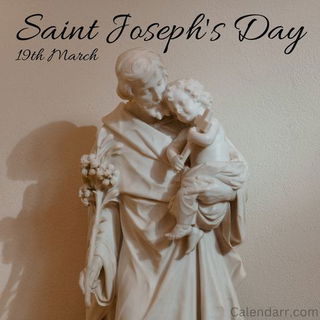The Gregorian calendar, also known as the Western Calendar, is the most used calendar around the world. It was first used in 1582, as an evolution of what already existed, enabling people to understand the year and season with increasing accuracy.
The aim of creating a calendar has always been to try to produce the most accurate and simple representation of the passing of years. Since the average length of a tropical year is a decimal (approximately 365.24217 solar days), this is hard to do. This was further complicated by the fact that early creators of the calendar wanted to also make both solar and lunar phases match neatly in their systems.

The origins
The Gregorian calendar shares a lot in common with the Julian calendar. Implemented by Julius Caesar in 45 b.c., the Julian calendar was the most successful and accurate calendar available. It calculated the year to be 365.25 days in length. In contrast, the first Roman calendar, introduced about 700 years earlier, had ten months and 304 days in a year. For nearly 1600 years the Julian calendar was the most widely used calendar in the world
Although far more accurate than the calendars that came before it, the Julian calendar calculated the year to be 365.25 days long. The difference between 365.24217 and 365.25 might not seem that large, however, the difference resulted in the calendar shifting by eleven minutes every year. As a consequence, Easter celebrations began falling further from the spring equinox and their traditional date of March 21.
A ten-day shift
The changing position of Easter in the year was noticed by Pope Gregory XIII in 1582. During the time that had passed between the death of Julius Caesar and the life of Pope Gregory XIII, the calendar had shifted by approximately 10 days. As a way to reform the Catholic calendar, and to fix the errors and miscalculations of the Julian Calendar, Pope Gregory established a commission to research a better and more accurate calendar. The results of the commission were implemented and given the name the Gregorian Calendar.
Pope Gregory XIII's reforms
The calendar which we currently use is based on the initial designs and proposals put forth by Aloysius Lilius (1510-1576), an Italian astronomer, who was a part of Pope Gregory XIII's commission. Aloysius Lilius never got to see his work being widely used, as he passed away in 1576. His work, however, was presented to the Pope by his brother, and then checked and approved by another member of the commission, a mathematician called Christopher Clavius.
The Gregorian calendar was introduced to the public on February 24, 1582, with the release of the papal bull (or public decree) Inter Gravissimas.
A year with 355 days
Not only did Pope Gregory XIII's amendments seek to improve the continued accuracy of the calendar, but they also corrected the problem of the ten additional days that had been gained since the introduction of the Julian calendar. In order to do this the year 1582 had only 355 days. October 4th was immediately followed by October 15th, therefore also known as the official start of the Gregorian calendar.
While Catholic countries such as Portugal and Italy quickly adopted the new calendar as soon as it was imposed, Protestant countries were reluctant to make the changes, as they saw it as a plot for Catholic domination. It wasn't until 1752 that England, and by default the colonies in the United States, adopted the Gregorian Calendar.

Gregorian Vs Julian Calendars
Accurate Leap years
One main difference between the Julian Calendar and the Gregorian Calendar is how leap years are treated. Whilst the Julian calendar treats every fourth year as a leap year (with 366 days), the Gregorian Calendar is actually more nuanced. In the Gregorian Calendar a leap year can only happen on years divisible by 4 or 400, but not if it is divisible by 100.
This small difference produces an average year length of 365.2425 days, which is closer to the tropical year length of 365.24217 solar days and therefore is more accurate.
Closer Alignment
Pope Gregory established rules to exactly place Easter in the calendar every year. Before these changes, Easter could vary greatly, and months would misalign with the seasons of the year and astronomical events.
Losing Ten Days
As mentioned above, a correction of ten days was made in 1582. At the time this was very controversial, with many people complaining that the ten days they were losing would result in them having shorter lives!
The Gregorian Months of the Year
The months have different naming traditions. Some of them were named after numbers representing their place in the calendar, for example, September (sept meaning 7), October (octo meaning 8), November (9), and December (10). The naming tradition derives from when the Roman calendar had ten months and March was the first month. So, for example, at that time September was the seventh month. Other months were also originally named after numbers but were then renamed in honor of famous leaders before the Gregorian Calendar was adopted.
Whilst there remains some mystery surrounding the names of the other months and where they originated, the principle theories include the following:
| Month | Days | Origins |
|
January |
31 |
Named after Janus, the Roman God of doors, portals, time, endings, and beginnings. |
|
February |
28 or 29 |
From the Latin word februare means to purify. February was a time of purification. |
|
March |
31 |
Named after Mars the Roman God of war which comes from the Latin word 'mavors' |
|
April |
30 |
Possibly from the Latin word Aprilis and Aperio which means opening up, to describe the opening of blossom in Spring. |
|
May |
31 |
From the Latin word Maius. Maia was a Greek Goddess of Spring and warmth. |
|
June |
30 |
Possibly named after the Roman Goddess Juno, Goddess of childbirth. |
|
July |
31 |
Named in honor of Julius Caesar. The month had been named Quintilius (meaning five) prior to Julius Caesar's death in 45 BC. |
|
August |
31 |
Originally named Sextilis (meaning six), the month was renamed in 8 BC in honor of the Roman Emperor Augustus Caesar. |
|
September |
30 |
From the Latin word septum which means seven. |
|
October |
31 |
From the Latin word octo which means eight. |
|
November |
30 |
From the Latin word novem which means nine. |
|
December |
31 |
From the Latin word decem which means ten. |
How the Gregorian Calendar works
- The Gregorian Calendar is a solar calendar, which means that it is based on the movement of the Earth around the sun.
- One year in the Gregorian Calendar has 365.2425 days, which is divided into 12 months, which are divided into 52 weeks, which have 7 days each.
Click here for more information about The Julian Calendar and leap years.
You might also like to read about BC and AD: Meanings and Differences











